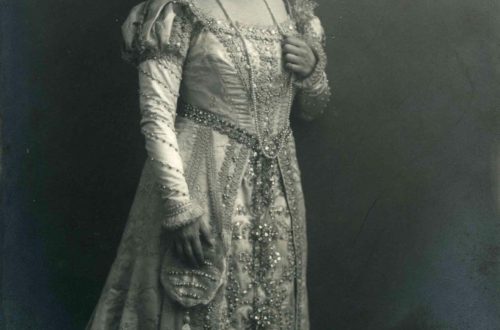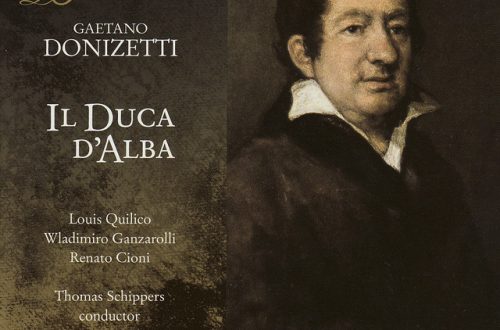
Birgit Nilsson |
Birgit Nilsson
Birgit Nilsson is a Swedish opera singer and dramatic soprano. One of the most famous opera singers of the second half of the 20th century. She received special recognition as an outstanding interpreter of Wagner’s music. At the peak of her career, Nilsson impressed with the effortless power of her voice that overwhelmed the orchestra, and with remarkable breath control, which allowed her to hold a note for an amazingly long time. Among colleagues she was known for her playful sense of humor and leadership character.
Marta Birgit Nilsson was born on May 17, 1918 into a peasant family and spent all her childhood on a farm in the town of Vestra Karup, in the province of Skane, 100 kilometers from the city of Malmö. There was no electricity or running water on the farm, like all peasant children, from an early age she helped her parents run the household – plant and harvest vegetables, milk cows, take care of other animals and perform the necessary household chores. She was the only child in the family, and Birgit’s father Nils Peter Swenson hoped that she would be his successor in this job. Birgit loved to sing since childhood and, in her own words, she began to sing before she could walk, she inherited her talent from her mother Justina Paulson, who had a beautiful voice and knew how to play the accordion. On her fourth birthday, Birgit, a hired worker and almost a member of the Otto family, gave her a toy piano, seeing her interest in music, her father soon gave her an organ. Parents were very proud of their daughter’s talent, and she often sang at home concerts for guests, village holidays and in elementary school. As a teenager, from the age of 14, she performed in a church choir and in an amateur theater troupe in the neighboring town of Bastad. Kantor drew attention to her abilities and showed Birgit to a singing and music teacher from the town of Astorp Ragnar Blenov, who immediately identified her abilities and said: “The young lady will definitely become a great singer.” In 1939, she studied music with him and he advised her to further develop her abilities.
In 1941, Birgit Nilsson entered the Royal Academy of Music in Stockholm. The father was against this choice, he hoped that Birgit would continue his work and inherit their strong economy, he refused to pay for her education. The money for education was allocated by the mother from her personal savings. Unfortunately, Justina did not manage to fully enjoy her daughter’s success, in 1949 she was hit by a car, this event devastated Birgit, but strengthened their relationship with her father.
In 1945, while still studying at the academy, Birgit met Bertil Niklason, a student at the veterinary college, on the train, they immediately fell in love and soon he proposed to her, in 1948 they got married. Birgit and Bertil remained together all their lives. He occasionally accompanied her on some trips around the world, but more often he stayed and worked at home. Bertil was not particularly interested in music, however, he always believed in his wife’s talent and supported Birgit in her work, just as she supported his work. Birgit never rehearsed at home with her husband: “These endless scales can destroy most marriages, or at least most nerves,” she said. At home, she found peace and could share her thoughts with Bertil, she appreciated the fact that he treated her like an ordinary woman, and never put a “great opera diva” on a pedestal. They didn’t have children.
At the Royal Academy, Birgit Nilsson’s vocal teachers were Joseph Hislop and Arne Sanegard. However, she considered herself self-taught and said: “The best teacher is the stage.” She deplored her early education and attributed her success to natural talent: “My first singing teacher almost killed me, the second one was almost as bad.”
Birgit Nilsson’s debut on the opera stage took place at the Royal Opera House in Stockholm in 1946, in the role of Agatha in K. M. Weber’s “Free Shooter”, she was invited three days before the performance to replace the ill actress. Conductor Leo Blech was very dissatisfied with her performance, and for some time she was not trusted with other roles. The following year (1947) she successfully passed the audition, this time there was enough time, she prepared perfectly and brilliantly performed the title role in Verdi’s Lady Macbeth under the baton of Fritz Busch. She won the recognition of the Swedish audience and gained a foothold in the theater troupe. In Stockholm, she created a stable repertoire of lyric-dramatic roles, including Donna Anna from Mozart’s Don Giovanni, Verdi’s Aida, Puccini’s Tosca, Sieglind from Wagner’s Valkyrie, Marshall from Strauss’s The Rosenkavalier and others, performing them in Swedish. language.
An important role in the development of Birgit Nilsson’s international career was played by Fritz Busch, who presented her at the Glyndebourne Opera Festival in 1951 as Elektra from Mozart’s Idomeneo, King of Crete. In 1953, Nilsson made her debut at the Vienna State Opera – it was a turning point in her career, she would constantly perform there for more than 25 years. This was followed by the roles of Elsa of Brabant in Wagner’s Lohengrin at the Bayreuth Festival and her first Brunnhilde in the full cycle of Der Ring des Nibelungen at the Bavarian State Opera. In 1957, she made her debut at Covent Garden in the same role.
One of the biggest events in the creative life of Birgit Nilsson considers the invitation to the opening of the opera season at La Scala in 1958, in the role of Princess Turandot G. Puccini, at that time she was the second non-Italian singer in history after Maria Callas, who was granted the privilege opening of the season at La Scala. In 1959, Nilsson made her first appearance at the Metropolitan Opera as Isolde in Wagner’s Tristan und Isolde, and succeeded the Norwegian soprano Kirsten Flagstad in Wagner’s repertoire.
Birgit Nilsson was the leading Wagnerian soprano of her day. However, she also performed many other famous roles, in total her repertoire includes more than 25 roles. She has performed in almost all major opera houses in the world, including Moscow, Vienna, Berlin, London, New York, Paris, Milan, Chicago, Tokyo, Hamburg, Munich, Florence, Buenos Aires and others. Like all opera singers, in addition to theatrical performances, Birgit Nilsson gave solo concerts. One of the most famous concert performances of Birgit Nilsson was the concert with the Sydney Symphony Orchestra conducted by Charles Mackeras with the program “All Wagner”. This was the first official opening concert of the Sydney Opera House Concert Hall in 1973 in the presence of Queen Elizabeth II.
Birgit Nilsson’s career was quite long, she performed all over the world for almost forty years. In 1982, Birgit Nilsson made her last appearance on the opera stage in Frankfurt am Main as Elektra. A solemn farewell to the stage was planned with the opera “Woman Without a Shadow” by R. Strauss at the Vienna State Opera, however, Birgit canceled the performance. Thus, the performance in Frankfurt was the last on the opera stage. In 1984, she made her last concert tour in Germany and finally left big music. Birgit Nilsson returned to her homeland and continued to hold charity concerts, involving young singers, for the local musical society, which began in 1955 and became popular with many opera lovers. She held her last such concert as an entertainer in 2001.
Birgit Nilsson lived a long and eventful life. She passed away peacefully at her home on December 25, 2005, at the age of 87. Her singing continues to inspire performers, fans and opera lovers around the world.
The merits of Birgit Nilsson are appreciated by many state and public awards from various countries, including Sweden, Denmark, France, Germany, Austria, Norway, the USA, England, Spain and others. She was an honorary member of several music academies and societies. Sweden is planning to issue a 2014-krona banknote in 500 with a portrait of Birgit Nilsson.
Birgit Nilsson organized a fund to support young talented Swedish singers and appointed them a scholarship from the fund. The first scholarship was awarded in 1973 and continues to be paid on an ongoing basis until now. The same foundation organized the “Birgit Nilsson Award”, intended for a person who has achieved, in a broad sense, something extraordinary in the world of opera. This award is given every 2-3 years, is one million dollars and is the largest award in music. According to the will of Birgit Nilsson, the award began to be awarded three years after her death, she chose the first owner herself and he became Placido Domingo, a great singer and her partner in the opera stage, who received the award in 2009 from the hands of King Charles XVI of Sweden. The second to receive the award in 2011 was the conductor Riccardo Muti.





